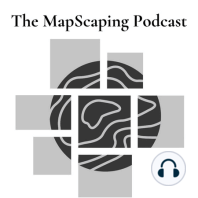23 min listen

Big Data In The Browser
FromThe MapScaping Podcast - GIS, Geospatial, Remote Sensing, earth observation and digital geography
Big Data In The Browser
FromThe MapScaping Podcast - GIS, Geospatial, Remote Sensing, earth observation and digital geography
ratings:
Length:
57 minutes
Released:
May 24, 2023
Format:
Podcast episode
Description
So why would anyone want to put alot of data into a browser? Well, for a lot of the same reasons that edge computing and distributed computing have become so popular.
You get the data a lot closer to the user and you don’t have to pay for the compute ;)
… this sounds great but as I found out during this conversation it's not as easy as it might seem!
There are a lot of trade-offs that need to be evaluated when moving data and analytics to the client.
Nick Rabinowitz Senior Staff Software Engineer at Foursquare has a ton of experience with this so he volunteered his time to help us understand more about it.
https://location.foursquare.com/
https://studio.foursquare.com/home
If you are not familiar with the Arrow data format it might be worth checking out
Apache Arrow defines a language-independent columnar memory format for flat and hierarchical data, organized for efficient analytic operations on modern hardware like CPUs and GPUs. The Arrow memory format also supports zero-copy reads for lightning-fast data access without serialization overhead
Related podcast episodes that you might find interesting include
H3 grid system
https://mapscaping.com/podcast/h3-geospatial-indexing-system/
The H3 geospatial indexing system is a discrete global grid system consisting of a multi-precision hexagonal tiling of the sphere with hierarchical indexes. H3 is a really interesting approach to tiling data that was developed by UBER and has been open-sourced.
Hex Tiles
https://mapscaping.com/podcast/hex-tiles/
If you have not heard of the H3 grid system before listen to that episode first before listening to this one it will add a lot of useful context!
Spatial Knowledge Graphs
https://mapscaping.com/podcast/spatial-knowledge-graphs/
Foursquare is moving away from spatial joins and focusing on building a knowledge graph. If you are not familiar with graphs this might be a good place to start, also its interesting to hear the reasons for the move from spatial joins to another data structure.
Distribution Geospatial Data
https://mapscaping.com/podcast/distributing-geospatial-data/
This is interesting if you want to understand more about distributed databases and some of the strategies for doing this. It sounds complicated but this episode is a really good introduction!
Cloud Native Geospatial
https://mapscaping.com/podcast/cloud-native-geospatial/
This episode give a solid overview of what cloud-native means and some of the current geospatial cloud native formats out there today
I am constantly thinking about how I can make this podcast better for you so if you have any ideas or suggestions please let me know!
Also, I am thinking of recording a behind-the-scenes episode, is that something you might be interested in? if so what questions do you have?
You get the data a lot closer to the user and you don’t have to pay for the compute ;)
… this sounds great but as I found out during this conversation it's not as easy as it might seem!
There are a lot of trade-offs that need to be evaluated when moving data and analytics to the client.
Nick Rabinowitz Senior Staff Software Engineer at Foursquare has a ton of experience with this so he volunteered his time to help us understand more about it.
https://location.foursquare.com/
https://studio.foursquare.com/home
If you are not familiar with the Arrow data format it might be worth checking out
Apache Arrow defines a language-independent columnar memory format for flat and hierarchical data, organized for efficient analytic operations on modern hardware like CPUs and GPUs. The Arrow memory format also supports zero-copy reads for lightning-fast data access without serialization overhead
Related podcast episodes that you might find interesting include
H3 grid system
https://mapscaping.com/podcast/h3-geospatial-indexing-system/
The H3 geospatial indexing system is a discrete global grid system consisting of a multi-precision hexagonal tiling of the sphere with hierarchical indexes. H3 is a really interesting approach to tiling data that was developed by UBER and has been open-sourced.
Hex Tiles
https://mapscaping.com/podcast/hex-tiles/
If you have not heard of the H3 grid system before listen to that episode first before listening to this one it will add a lot of useful context!
Spatial Knowledge Graphs
https://mapscaping.com/podcast/spatial-knowledge-graphs/
Foursquare is moving away from spatial joins and focusing on building a knowledge graph. If you are not familiar with graphs this might be a good place to start, also its interesting to hear the reasons for the move from spatial joins to another data structure.
Distribution Geospatial Data
https://mapscaping.com/podcast/distributing-geospatial-data/
This is interesting if you want to understand more about distributed databases and some of the strategies for doing this. It sounds complicated but this episode is a really good introduction!
Cloud Native Geospatial
https://mapscaping.com/podcast/cloud-native-geospatial/
This episode give a solid overview of what cloud-native means and some of the current geospatial cloud native formats out there today
I am constantly thinking about how I can make this podcast better for you so if you have any ideas or suggestions please let me know!
Also, I am thinking of recording a behind-the-scenes episode, is that something you might be interested in? if so what questions do you have?
Released:
May 24, 2023
Format:
Podcast episode
Titles in the series (100)
Immersive maps give context to data - this is Street View for rivers: Fishviews is the Google Street View for rivers. The creators believe that the ability to virtually explore river environments is going to fundamentally change the way we understand waterways. The idea being that 360 immersive experiences will give people... by The MapScaping Podcast - GIS, Geospatial, Remote Sensing, earth observation and digital geography